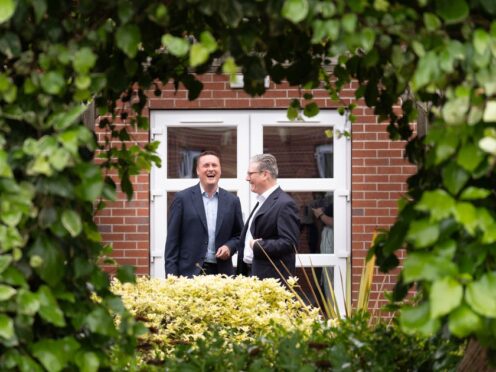
Sir Keir Starmer and Sir Ed Davey both held election events on Wednesday, while Prime Minister Rishi Sunak stayed off the campaign trail ahead of his appearance in the leaders’ TV debate in the evening.
The Labour leader visited a surgery in the constituency of Leicestershire North West: a seat where the Conservatives are defending a notional majority of 18,548.
The size of the swing needed for Labour to win this seat is enormous at 18.4 percentage points, large enough to rank it at number 234 on a list of the party’s targets.
Nonetheless, it is the sixth seat visited by Sir Keir during the campaign where the Tories are defending a majority of more than 15,000, the other five being Gillingham & Rainham (where he launched Labour’s campaign on May 23), Basingstoke, Reading West & Mid Berkshire, Hertford & Stortford and Kettering.

The Labour leader has now visited 42 seats in the course of the campaign, 30 of which are being defended by the Conservatives, according to data compiled by the PA news agency.
The most marginal Tory-Labour battleground seat he has visited is Bury North, which needs a swing of 1.2 percentage points to change hands and is ranked seventh on the party’s target list.
He has also held events in eight Labour seats, three SNP seats in Scotland, and Brighton Pavilion in East Sussex which is being defended by the Greens.
Sir Ed Davey campaigned on Wednesday in two of his party’s target seats: Chelmsford and Henley & Thame.
The Conservatives are defending notional majorities in these constituencies of 15,416 and 11,901 respectively.
The Lib Dems need a swing of 14.4 percentage points in Chelmsford and 11.1 percentage points in Henley & Thame, ranking them at numbers 56 and 33 on a list of the party’s targets.
Sir Ed’s party has never won Chelmsford, while Henley & Thame is a new seat at this election, incorporating most of the now-abolished constituency of Henley, held from 2001 to 2008 by former prime minister Boris Johnson.

Sir Ed has now visited 38 different constituencies since the start of the campaign, 34 of which are being defended by the Conservatives.
They include many of the key Tory-Lib Dem battlegrounds, including Carshalton & Wallington (where the notional Tory majority is 629), Wimbledon (839), Cheltenham (1,421), Cambridgeshire South (1,498), Eastbourne (2,168) and Cheadle (2,336).
The four non-Tory constituencies visited by Sir Ed are the safe Labour seat of Hackney South & Shoreditch, where he launched the Lib Dem manifesto; Sheffield Hallam, the only Labour-Lib Dem marginal at this election; Cowdenbeath & Kirkcaldy in Scotland, won by the SNP in 2019 and more plausibly a Labour target at this election; and the safe Lib Dem seat of Bath.
Rishi Sunak has visited 42 different constituencies since the campaign began – the same number as Sir Keir Starmer – of which 37 are Conservative defences.
In eight of these seats, the Tories are defending notional majorities of more than 20,000, including the PM’s own seat of Richmond & Northallerton.

Mr Sunak has visited only two Labour seats so far: Blyth & Ashington, a new constituency at this election, but one which would have had a notional Labour majority in 2019 of 6,118; and Cambridge.
The other three seats in which he has held campaign events are Caithness, Sutherland & Easter Ross (won by the SNP in 2019), Edinburgh East & Musselburgh (SNP), and Belfast East (DUP).

Enjoy the convenience of having The Sunday Post delivered as a digital ePaper straight to your smartphone, tablet or computer.
Subscribe for only £5.49 a month and enjoy all the benefits of the printed paper as a digital replica.
Subscribe